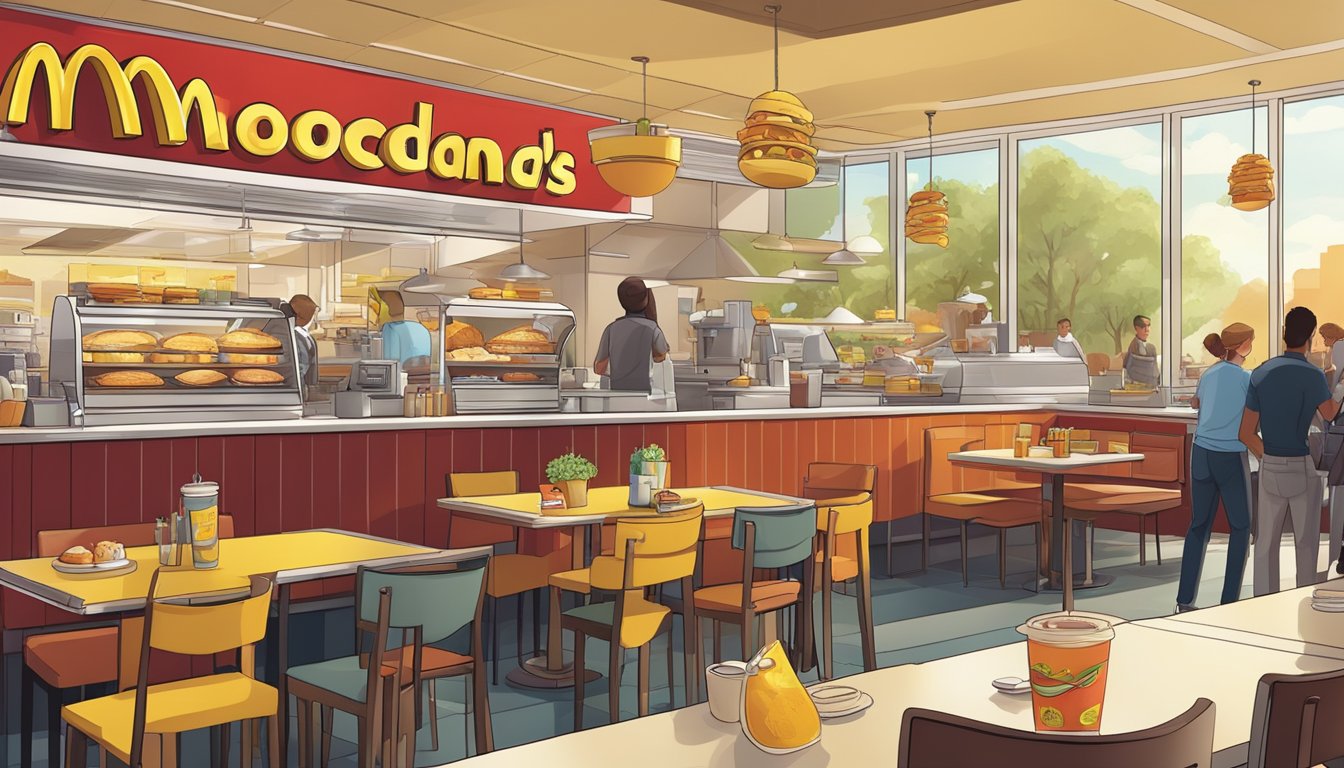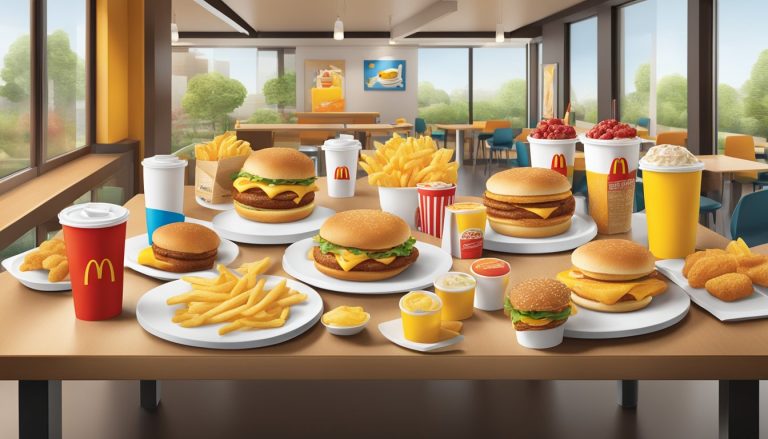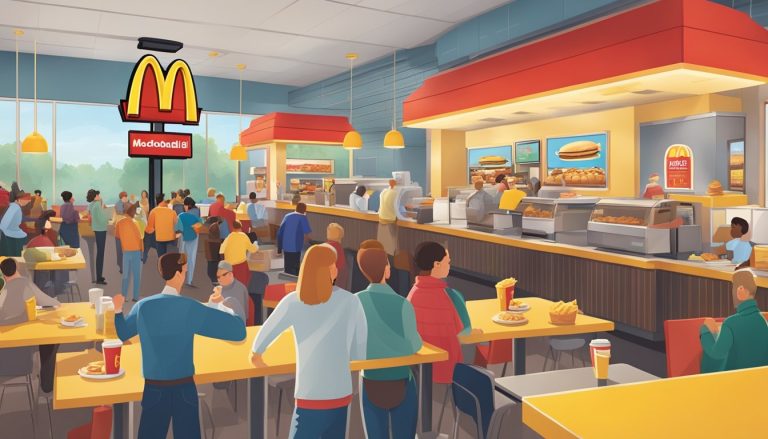McDonald’s revolutionized the fast food industry when it introduced its breakfast menu nationwide in 1977. The innovative offerings, including the iconic Egg McMuffin, transformed morning dining habits and set a new standard for quick-service restaurants.
The success of McDonald’s breakfast menu sparked a trend that reshaped the restaurant landscape, leading to the rise of breakfast-themed establishments across the country. These specialized eateries capitalized on the growing demand for diverse morning meal options beyond traditional fare.
The breakfast wars that ensued among fast food chains further underscored the importance of the morning daypart. As competitors scrambled to capture market share, consumers benefited from an expanding array of convenient and affordable breakfast choices, cementing the meal’s status as a key component of the modern fast food experience.
Evolution of McDonald’s Breakfast
McDonald’s breakfast menu has undergone significant changes since its inception, transforming the fast food landscape and reshaping morning dining habits for millions.
The Debut of the Egg McMuffin
The Egg McMuffin, introduced in 1971, marked the beginning of McDonald’s breakfast era. Created by franchise owner Herb Peterson, this sandwich revolutionized fast food breakfast offerings. It featured a toasted English muffin, Canadian bacon, a poached egg, and cheese.
The Egg McMuffin’s popularity led to its nationwide rollout in 1972. Its success prompted McDonald’s to consider expanding their breakfast options further.
Expansion of the Breakfast Menu
By 1977, McDonald’s officially launched its breakfast menu across all U.S. locations. The menu included hotcakes, toasted English muffins, scrambled eggs, sausage, hash browns, and Danish pastries.
Throughout the 1980s and 1990s, McDonald’s continued to innovate. New items like the Sausage McMuffin, Sausage Biscuit, and McGriddles were added. These additions catered to diverse tastes and regional preferences.
Hash browns became a staple side dish, complementing the breakfast sandwiches perfectly.
Introduction of All-Day Breakfast
In October 2015, McDonald’s made a game-changing move by introducing all-day breakfast. This decision came in response to long-standing customer demands.
The all-day breakfast menu initially included a limited selection of popular items like the Egg McMuffin, Sausage McMuffin, and hash browns. Over time, the offering expanded to include more options.
This move significantly boosted McDonald’s sales and customer satisfaction. It also forced competitors to reconsider their breakfast strategies, further cementing McDonald’s position as a breakfast leader in the fast food industry.
McDonald’s Breakfast Menu
McDonald’s breakfast offerings have become iconic in the fast food industry. The menu features a range of hearty and satisfying options to start the day.
Signature Breakfast Items
The Egg McMuffin stands as McDonald’s most famous breakfast sandwich. It combines a toasted English muffin, Canadian bacon, a freshly cracked egg, and melted cheese. McGriddles offer a sweet and savory twist, with warm griddle cakes as buns.
Hotcakes with syrup and butter remain a classic choice for those craving something sweeter. The crispy Hash Browns provide a perfect savory side to complement any breakfast meal.
Biscuit sandwiches present another popular option, featuring flaky buttermilk biscuits with various fillings like sausage, bacon, or chicken.
McCafé and Beverage Options
McCafé expanded McDonald’s breakfast beverage selection beyond basic coffee. The line includes espresso-based drinks like lattes, cappuccinos, and mochas. Iced coffee and frappe options cater to those preferring cold beverages.
For non-coffee drinkers, McDonald’s offers hot tea, hot chocolate, and fruit smoothies. Orange juice and apple juice provide refreshing alternatives.
The chain takes pride in its Premium Roast Coffee, which has gained a loyal following among customers seeking a quick caffeine fix with their morning meal.
Healthy and Light Choices
McDonald’s has introduced lighter options to cater to health-conscious customers. The Fruit & Maple Oatmeal provides a wholesome choice, made with rolled oats and topped with fresh apple slices and light cream.
Egg White Delight McMuffins offer a lower-calorie alternative to the classic sandwich. Made with egg whites and white cheddar on a whole grain English muffin, it appeals to those watching their calorie intake.
Apple slices are available as a side option, allowing customers to swap out Hash Browns for a fresher, lighter accompaniment to their breakfast.
Nutritional Analysis of Breakfast Offerings

McDonald’s breakfast menu offers a range of options, from sandwiches to pancakes. The nutritional content varies significantly across items, with some providing more balanced nutrition than others.
Caloric Content of Popular Items
The Egg McMuffin contains 300 calories, making it one of the lower-calorie breakfast sandwich options. In contrast, hotcakes with syrup pack 590 calories. Hash browns add 150 calories to a meal.
A Sausage McMuffin with Egg delivers 480 calories, with 31g of fat and 20g of protein. This item provides a more balanced macronutrient profile compared to some other options.
Bacon, often featured in breakfast sandwiches, adds flavor but also increases calorie and fat content. A Bacon, Egg & Cheese Biscuit contains 460 calories and 26g of fat.
Balancing Convenience with Health
McDonald’s offers some healthier breakfast choices. The Fruit & Maple Oatmeal contains 320 calories and provides 4g of fiber. Egg White Delight McMuffin has 250 calories and 18g of protein.
Customers can customize orders to reduce calorie intake. Removing cheese or switching to a lighter bread option can make a difference. Choosing water or black coffee instead of sugary drinks also helps cut calories.
While convenient, frequent consumption of fast-food breakfasts may lead to excessive intake of sodium and saturated fat. The Sausage McMuffin with Egg, for example, contains 830mg of sodium – over one-third of the daily recommended limit.
The Impact of McDonald’s Breakfast on Fast Food Industry
McDonald’s introduction of breakfast items revolutionized the fast food landscape. It sparked intense competition and reshaped consumer expectations, leading to widespread changes across the industry.
Competitor Breakfast Strategies
Taco Bell launched its breakfast menu in 2014, featuring unique items like the Waffle Taco. This move aimed to capture market share from McDonald’s dominant position. Burger King expanded its breakfast offerings, introducing menu items designed to compete directly with McDonald’s popular Egg McMuffin.
Denny’s and IHOP, traditional sit-down breakfast restaurants, faced new challenges. They responded by emphasizing their full-service experience and expanding all-day breakfast options. These chains also introduced grab-and-go items to compete with fast food convenience.
Fast food chains that previously didn’t offer breakfast, like Wendy’s, entered the market. This led to increased competition and innovation in breakfast menu items across the industry.
Market Trends and Consumer Preferences
McDonald’s all-day breakfast launch in 2015 significantly impacted consumer behavior. It blurred traditional mealtime boundaries and increased demand for breakfast items throughout the day. This shift prompted other chains to extend their breakfast hours or offer all-day breakfast options.
Consumer preferences evolved to favor healthier breakfast choices. Fast food chains responded by introducing items with egg whites, oatmeal, and fruit. The popularity of coffee drinks also surged, with many chains expanding their coffee menus to compete with specialty coffee shops.
Mobile ordering and delivery services became increasingly important in the breakfast segment. Chains invested in technology to streamline ordering processes and cater to on-the-go consumers.
Breakfast-Themed Restaurants and Cultural Influence
Breakfast-themed restaurants have transformed morning dining habits and influenced broader food culture. These establishments have capitalized on social media trends, expanded menu offerings, and tapped into nostalgia for traditional breakfast foods.
Rise of Specialized Breakfast Locations
Dedicated breakfast eateries have surged in popularity since the early 2000s. These restaurants focus on classic breakfast items like pancakes, waffles, and French toast, often with creative twists. Many offer all-day breakfast menus, catering to diverse schedules and cravings.
Some notable breakfast chains include:
- IHOP (International House of Pancakes)
- Waffle House
- Denny’s
- First Watch
These establishments have expanded rapidly, filling a niche for casual, affordable breakfast options beyond fast food. They often feature cozy, diner-like atmospheres that appeal to families and young adults alike.
McDonald’s Influence on Breakfast Culture
McDonald’s revolutionized breakfast on-the-go with the introduction of the Egg McMuffin in 1971. This innovation sparked a breakfast war among fast food chains, leading to an explosion of quick-service breakfast options.
Key impacts of McDonald’s breakfast menu:
- Popularized breakfast sandwiches
- Normalized eating breakfast away from home
- Introduced all-day breakfast in 2015, further blurring traditional meal times
McDonald’s success prompted other chains to develop their own breakfast menus, increasing competition and variety in the breakfast market. This shift has significantly influenced how Americans view and consume their morning meals.
Social Media and Breakfast Promotion
Social media platforms, especially Instagram, have played a crucial role in promoting breakfast culture. Visually appealing breakfast dishes have become social media stars, driving trends and influencing restaurant menus.
Popular breakfast hashtags:
- #BreakfastGoals
- #BrunchLife
- #AvocadoToast
Restaurants have adapted their offerings to be more “Instagrammable,” featuring colorful smoothie bowls, elaborately topped waffles, and artfully presented egg dishes. This focus on visual appeal has elevated breakfast from a simple meal to a social experience worth sharing online.
Social media has also fueled the popularity of breakfast-themed pop-up events and food festivals, further cementing breakfast’s place in contemporary food culture.
Future of Breakfast at McDonald’s

McDonald’s continues to evolve its breakfast offerings to meet changing consumer preferences and market trends. The company is focusing on innovative menu items and sustainable sourcing practices to maintain its leadership in the fast-food breakfast segment.
Innovation in Breakfast Options
McDonald’s is exploring new breakfast items to cater to diverse tastes. Plant-based options like veggie breakfast sandwiches are being tested in select markets. The company is also considering international flavors to appeal to a global customer base.
Customization is becoming a key focus. McDonald’s may introduce build-your-own breakfast bowls or wraps, allowing customers to personalize their morning meals.
Digital ordering and delivery services are expanding for breakfast items. This includes mobile app exclusives and loyalty program rewards tailored to breakfast enthusiasts.
Sustainability and Ethical Sourcing
McDonald’s is committed to improving its sustainability practices for breakfast ingredients. The company aims to source 100% of its eggs from cage-free hens by 2025 in many markets.
Ethical coffee sourcing is a priority. McDonald’s is working with suppliers to ensure its coffee meets rigorous environmental and social standards.
Packaging for breakfast items is transitioning to more eco-friendly materials. The company plans to eliminate plastic straws and reduce overall packaging waste.
Local sourcing initiatives are being implemented for breakfast ingredients where possible. This supports regional farmers and reduces transportation-related emissions.
Customer Experience and Service Models

McDonald’s has revolutionized fast food service through innovative customer experience initiatives and evolving service models. The company continuously adapts to meet changing consumer preferences and expectations.
Convenience and Accessibility
McDonald’s pioneered the Drive Thru concept in the early 1970s, transforming how customers interact with fast food restaurants. This innovation significantly increased accessibility and convenience for on-the-go diners.
The introduction of all-day breakfast in 2015 further enhanced customer choice and flexibility. This move allowed patrons to enjoy popular breakfast items like the Egg McMuffin at any time of day.
McDonald’s has also embraced digital ordering platforms and mobile apps. These technologies enable customers to place orders remotely and pick up food with minimal wait times.
Customer Loyalty and Feedback
McDonald’s prioritizes customer feedback to drive improvements and maintain loyalty. The company regularly conducts surveys and analyzes customer suggestions to inform new product offerings and service enhancements.
The Happy Meal, a long-standing menu staple, exemplifies McDonald’s commitment to creating positive experiences for families and children. This initiative has fostered brand loyalty across generations.
McDonald’s loyalty programs reward frequent customers with points and exclusive offers. These incentives encourage repeat visits and help the company gather valuable data on consumer preferences.
The chain’s vast network of locations ensures consistent experiences for customers worldwide. This global presence allows McDonald’s to gather diverse feedback and implement localized improvements.




